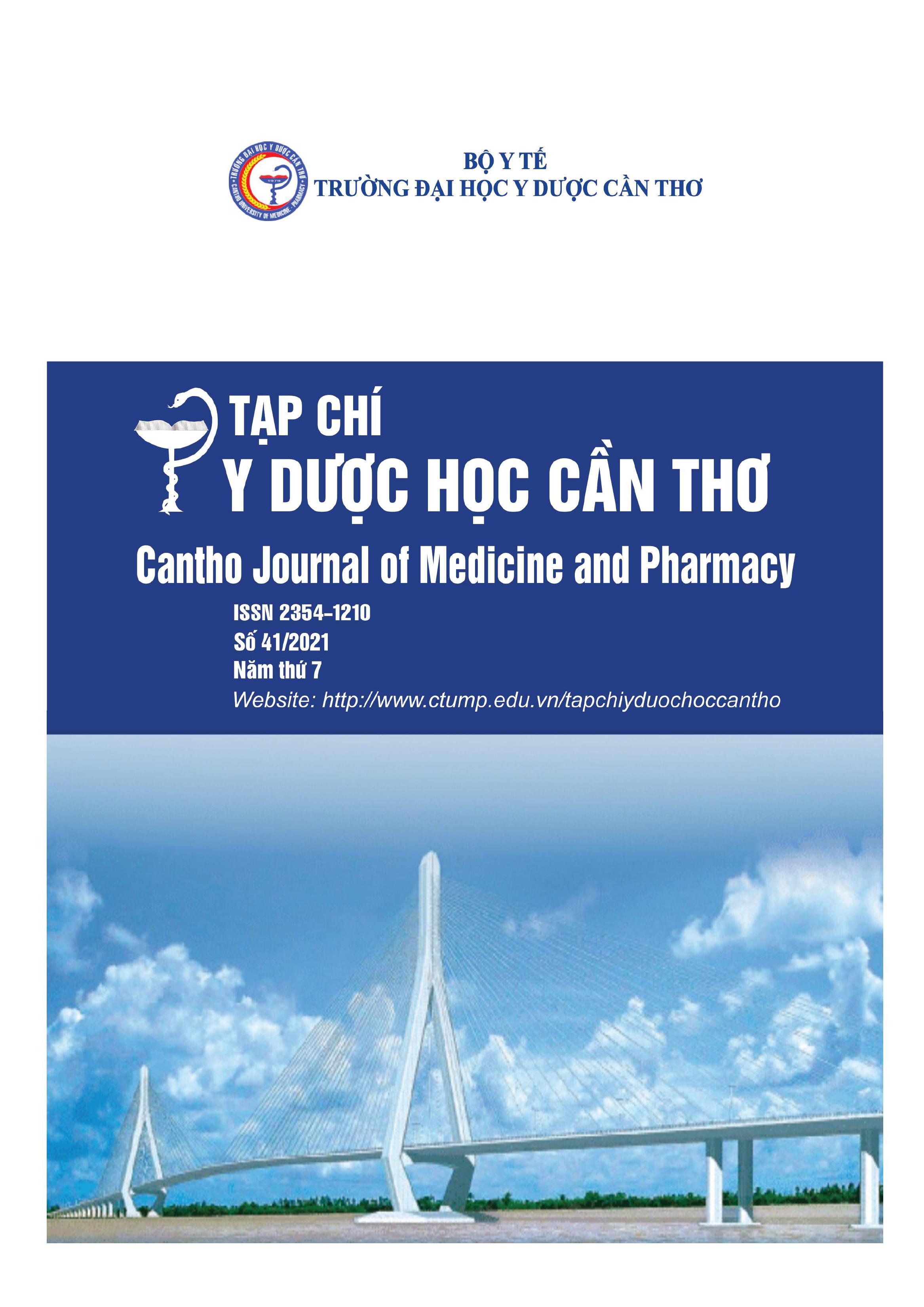THE SITUATION OF THE ANTIPLATELET DRUGS AND ANTICOAGULANTS IN TREATMENT CEREBRAL INFARCTION AT VINH LONG GENERAL HOSPITAL IN 2020
Main Article Content
Abstract
Background: Cerebral infarction is always the burning issue of medicine because it is common, worldwide, of a high mortality rate, which leaves a lot of severe sequels. Objectives: (1) To determine the ratio used of the antiplatelet drugs and anticoagulants in treatment of cerebral infarction. (2) To determine the ratio and level of drug interactions of antiplatelet drugs and anticoagulants. Materials and methods: A cross-sectional observational study was conducted by reviewing 304 medical records of hospitalized patients was diagnosed with cerebral infarction in internal cardiovascular department of Vinh Long General Hospital, Vietnam during 12 months from January 2020 to January 2021. Results: In 304 patients using antiplatelet drugs and/or anticoagulants, aspirin accounted for 90.8% and clopidogrel 14.5%; enoxaparin made up 3% and acenocoumarol 5.9%. For the antithrombotic therapy, monotherapy regimen was employed most frequently 87.5%. Double and triple therapy regimens were 10% and 1.6%, respectively; of 6 different antithrombotic regimens used and the most common regimens were 1 antiplatelet drug and/or anticoagulants. The rate of drug interactions is 75%. Of all drug-drug interactions, 12.3% was classified as major and 66.7% as moderate. Conclusion: antiplatelet drugs and/or anticoagulants with value in reducing the risk of cerebral infarction and can help us to reduce mortality rate, disability and relapse.
Article Details
Keywords
Cerebral infarction, antiplatelet drugs, anticoagulants, drug interactions
References
2. Bộ môn Dược lý - Dược lâm sàng (2020), Giáo trình Dược lý, Khoa Dược, Trường Đại học Y Dược Cần Thơ.
3. Nguyễn Thị Thúy Ngọc (2020), Khảo sát tình hình điều trị nhồi máu não cấp tại Bệnh viện trường Đại học Y Dược Cần Thơ, Luận văn Thạc sĩ Dược học, Đại học Y Dược Thành phố Hồ Chí Minh.
4. Lê Ngọc Anh Pha (2019), Khảo sát việc sử dụng thuốc chống kết tập tiểu cầu và thuốc chống đông trên bệnh nhân nhồi máu não tại Bệnh viện Đa khoa thành phố Cần Thơ, Luận văn Thạc sĩ Dược học, Đại học Y Dược Thành phố Hồ Chí Minh.
5. Phan Thị Uyên (2016), Phân tích tình hình sử dụng thuốc trên bệnh nhân nhồi máu não tại Trung tâm Đột quỵ Bệnh viện Trung ương Quân đội 108, Luận văn thạc sỹ dược học, Đại học Y Dược Hà Nội.
6. Benjamin E J, Virani S S, Callaway C W, Chamberlain A M, et al. (2018), “Heart Disease and Stroke Statistics-2018 Update: A Report From the American Heart Association”, Circulation, 137 (12), pp.e67-e492.
7. Hankey, G. J. (2017), Stroke, The Lancet, 389(10069), pp.641-654.
8. Johnston SC, Easton JD, Farrant M, Barsan W, et al. (2018), “Clopidogrel and Aspirin in Acute Ischemic Stroke and High-Risk TIA”, N Engl J Med, 379, pp. 215-225.
9. William J. Power, et al. (2018), “Guidelines for the Early Management of Patients With Acute Ischemic Stroke, A Guideline for Healthcare Professionals From the American Heart Association/American Stroke Association”, Stroke, 49(3).


